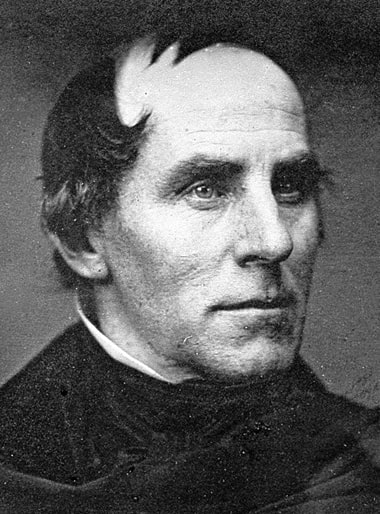Thomas Cole Biography

Thomas Cole (1801-1848) was a pioneering American landscape painter and founder of the Hudson River School, a mid-19th century art movement known for its romantic depictions of the American wilderness. Born in England, Cole immigrated to the United States as a teenager and quickly gained recognition for his dramatic, richly detailed paintings of the Catskill Mountains and other scenic locales. His works, which often incorporated allegorical and moral themes, helped establish landscape painting as a serious art form in America. Cole's influence extended beyond painting, as he also made important contributions as a writer and teacher. Today, he is regarded as one of the most important figures in the history of American art, with his paintings held in the collections of major museums worldwide.
Early Life and Career
Thomas Cole was born on February 1, 1801, in Bolton, Lancashire, England. The son of a wool merchant, Cole received little formal education but showed an early talent for drawing and painting. In 1818, at the age of 17, Cole immigrated to the United States with his family, settling in Steubenville, Ohio. There, he worked as an engraver and portrait painter, honing his skills and developing an interest in landscape painting.
In 1823, Cole moved to New York City, where he began painting scenes of the Catskill Mountains and other scenic locales in the Hudson Valley. His work quickly gained recognition, and in 1825, he was commissioned to paint a series of landscapes for the New York art collector Luman Reed. This commission allowed Cole to travel to Europe, where he studied the works of European landscape painters and developed his own distinctive style.
The Hudson River School and Allegorical Landscapes
Upon his return to the United States in 1832, Cole began to paint a series of allegorical landscapes that would establish his reputation as a major American artist. These works, such as The Course of Empire (1834-1836) and The Voyage of Life (1839-1840), combined meticulous realism with symbolic imagery to convey moral and philosophical messages about the relationship between humanity and nature.
Cole's allegorical landscapes were part of a larger movement known as the Hudson River School, which was characterized by its romantic depictions of the American wilderness. As the founder of this movement, Cole helped to establish landscape painting as a serious art form in America and inspired a generation of artists to follow in his footsteps.
Thomas Cole's Visionary Art and Its Enduring Influence
Throughout his career, Cole continued to paint dramatic, richly detailed landscapes that captured the grandeur and spiritual essence of the American wilderness. His works were widely admired and collected, and he became a respected figure in the art world.
In addition to his painting, Cole also made important contributions as a writer and teacher. He wrote several influential essays on art and aesthetics, and he taught many of the artists who would go on to become leaders of the Hudson River School.
Cole's influence extended beyond the art world as well. His paintings, with their allegorical themes and moral messages, resonated with a wide audience and helped to shape the cultural landscape of 19th-century America.
***
Today, Thomas Cole is regarded as one of the most important figures in the history of American art. His paintings are held in the collections of major museums worldwide, and his legacy continues to inspire artists and art lovers alike. Through his sweeping, allegorical landscapes, Cole helped to define the American identity and to celebrate the beauty and grandeur of the American wilderness.